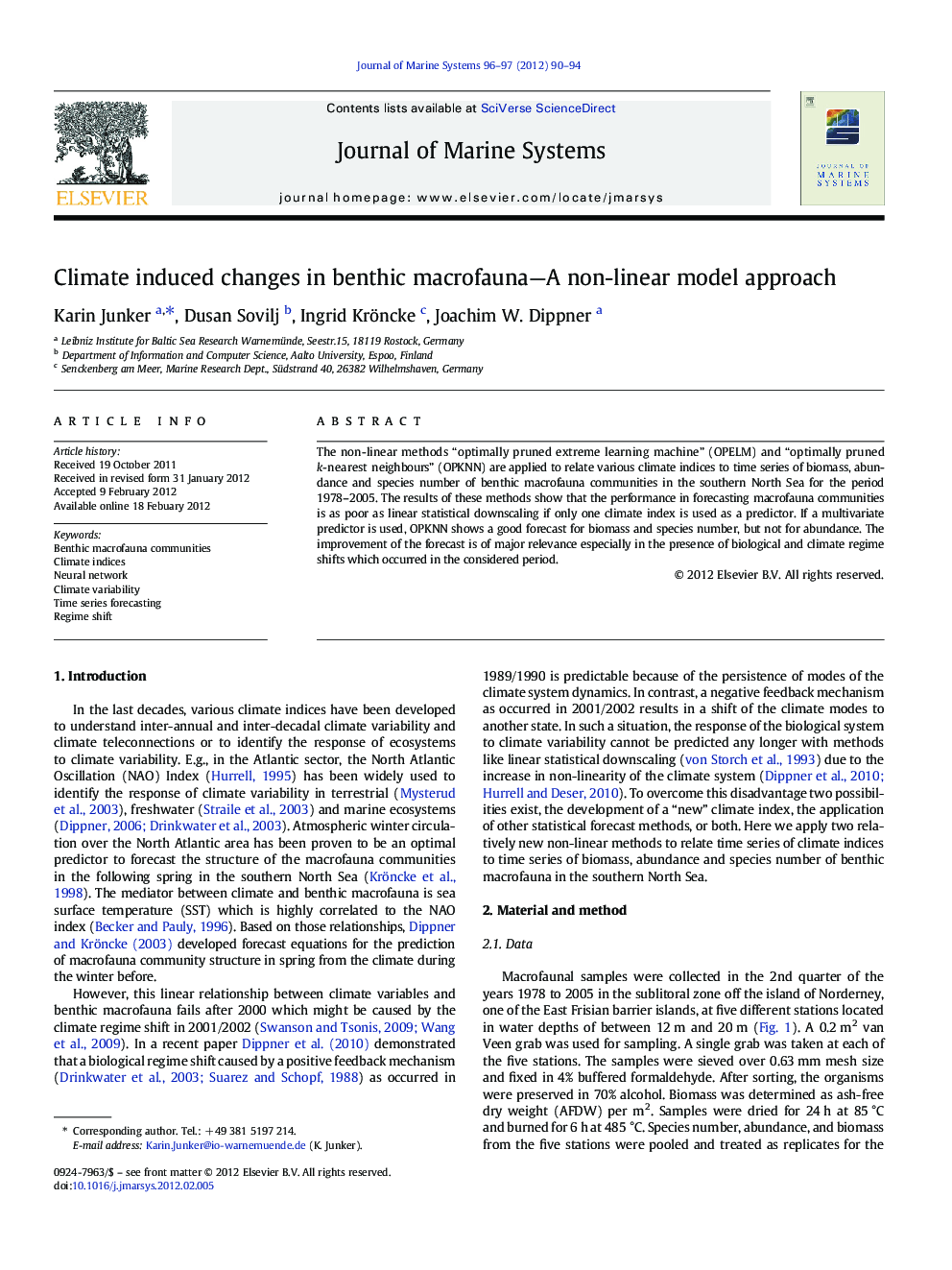| Article ID | Journal | Published Year | Pages | File Type |
|---|---|---|---|---|
| 4548273 | Journal of Marine Systems | 2012 | 5 Pages |
The non-linear methods “optimally pruned extreme learning machine” (OPELM) and “optimally pruned k-nearest neighbours” (OPKNN) are applied to relate various climate indices to time series of biomass, abundance and species number of benthic macrofauna communities in the southern North Sea for the period 1978–2005. The results of these methods show that the performance in forecasting macrofauna communities is as poor as linear statistical downscaling if only one climate index is used as a predictor. If a multivariate predictor is used, OPKNN shows a good forecast for biomass and species number, but not for abundance. The improvement of the forecast is of major relevance especially in the presence of biological and climate regime shifts which occurred in the considered period.
► Climate regime shift in 2001/2002 shifts the ecosystem of the southern North Sea to a new state. ► Benthic macrofauna biomass and species number is predictable for the period 1978–1999. ► Benthic macrofauna variability cannot be forecasted after 2000. ► Combination of large scale and regional scale climate descriptors significantly enhances predictability. ► Benthic macrofauna abundance remains unpredictable.
